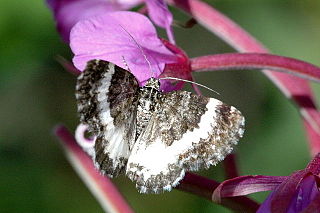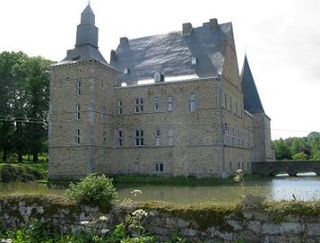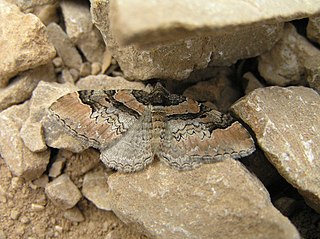
The bullhead sharks are a small order of modern sharks (Neoselachii). The nine living species are placed in a single genus, Heterodontus, in the family Heterodontidae. All are relatively small, with the largest species reaching just 1.65 metres (5.5 ft) in maximum length. They are bottom feeders in tropical and subtropical waters.

Carpet sharks are sharks classified in the order Orectolobiformes. Sometimes the common name "carpet shark" is used interchangeably with "wobbegong", which is the common name of sharks in the family Orectolobidae. Carpet sharks have five gill slits, two spineless dorsal fins, and a small mouth that does not extend past the eyes. Many species have barbels.

The Saint-Salvator Cathedral is the cathedral of Bruges, Flanders, in present-day Belgium. The cathedral is dedicated to the Verrezen Zaligmaker and Saint-Donatius of Reims.

Dermestidae are a family of Coleoptera that are commonly referred to as skin beetles. Other common names include larder beetle, hide or leather beetles, carpet beetles, and khapra beetles. There are over 1,100 species described.

The common carpet or white-banded toothed carpet is a moth of the family Geometridae. The species was first described by Otto Friedrich Müller in 1764. It is found throughout the Palearctic and the Near East. In North America it ranges across the northern tier of the United States plus every province and territory of Canada.

The Duchy of Brabant was a State of the Holy Roman Empire established in 1183. It developed from the Landgraviate of Brabant and formed the heart of the historic Low Countries, part of the Burgundian Netherlands from 1430 and of the Habsburg Netherlands from 1482, until it was partitioned after the Dutch revolt.

Colostygia pectinataria, the green carpet, is a moth of the genus Colostygia in the family Geometridae. It was first described by August Wilhelm Knoch in 1781.

Spargania luctuata, the white-banded carpet, is a moth of the family Geometridae. The species was first described by Michael Denis and Ignaz Schiffermüller in 1775. It is found throughout northern and central Europe, North Asia and North America.

Mesoleuca albicillata, the beautiful carpet, is a moth of the family Geometridae. It is found in the Palearctic.

Orthonama vittata, the oblique carpet, is a moth of the family Geometridae. The species was first described by Moritz Balthasar Borkhausen in 1794. It is found throughout the Palearctic realm.

Abée Castle is a fortified château in the municipality of Tinlot, Liège Province, Wallonia, Belgium. The present building dates from the 18th century, but incorporates parts of a medieval structure.

Roly Castle is a château-ferme, or fortified farmhouse, in Roly in the municipality of Philippeville, province of Namur, Wallonia, Belgium.
A fortified church is a church that is built to serve a defensive role in times of war. Such churches were specially designed to incorporate military features, such as thick walls, battlements, and embrasures. Others, such as the Ávila Cathedral were incorporated into the town wall. Monastic communities, such as Solovki Monastery, are often surrounded by a wall, and some churches, such as St. Arbogast in Muttenz, Switzerland, have an outer wall as well. Churches with additional external defences such as curtain walls and wall towers are often referred to more specifically as fortress churches or Kirchenburgen.

Catarhoe rubidata, the ruddy carpet, is a moth of the family Geometridae. The species was first described by Michael Denis and Ignaz Schiffermüller in 1775. It is found in western Europe and the Iberian Peninsula and western Central Asia.

Chloroclysta miata, the autumn green carpet, is a moth of the family Geometridae. The species was first described by Carl Linnaeus in his 1758 10th edition of Systema Naturae. It is found from most of Europe to the Alatau in Central Asia.

Colostygia olivata, the beech-green carpet, is a moth of the family Geometridae. It was first described by Michael Denis and Ignaz Schiffermüller in 1775 and it is found in most of the Palearctic.

Lampropteryx suffumata, the water carpet, is a moth of the family Geometridae. It is found from Europe to the Altai Mountains and the Kamchatka Peninsula. The habitat consists of woodland, grassy areas, chalk downland and scrubland.

Ardabil is a city in northwestern Iran, and the capital of Ardabil Province. As of the 2022 census, Ardabil's population was 588,000. The dominant majority in the city are ethnic Iranian Azerbaijanis and the primary language of the people is Azerbaijani.

Pareulype berberata, the barberry carpet moth, is a moth of the family Geometridae. The species was first described by Austrian lepidopterists, Michael Denis and Ignaz Schiffermüller in 1775. The moth is found in Africa, Asia and Europe.
An agadir is a fortified communal granary found in the Maghreb. Some of these date back to the 10th century. These structures are typically composed of a granary and a citadel, and are located in rocky, elevated locations to protect surrounding farms and livestock from enemies. In addition to harvested grains, Amazigh communities inhabiting the mountainous south of Morocco would use these structures to store all kinds of valuable belongings, including deeds and records, money, jewelry, clothing, carpets, and sometimes clothes and munitions.



















